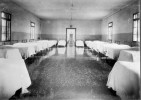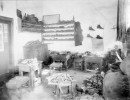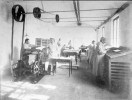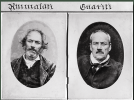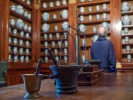
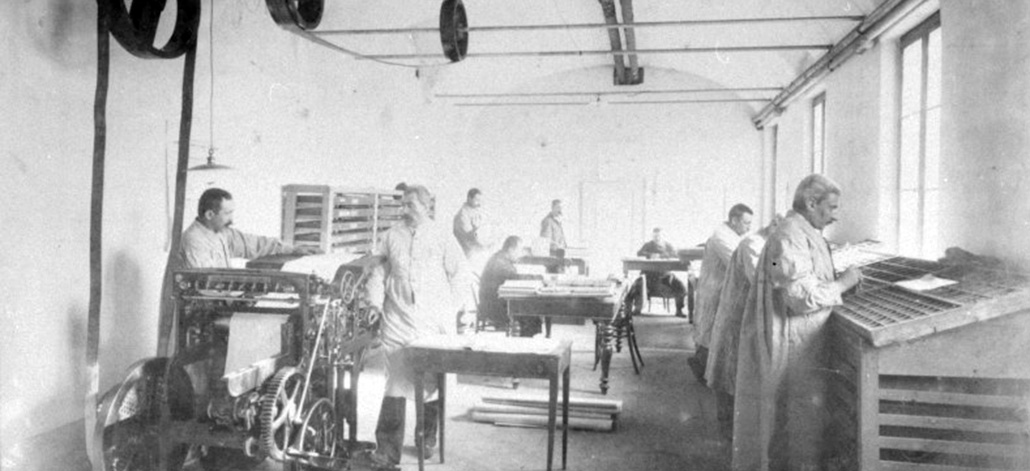

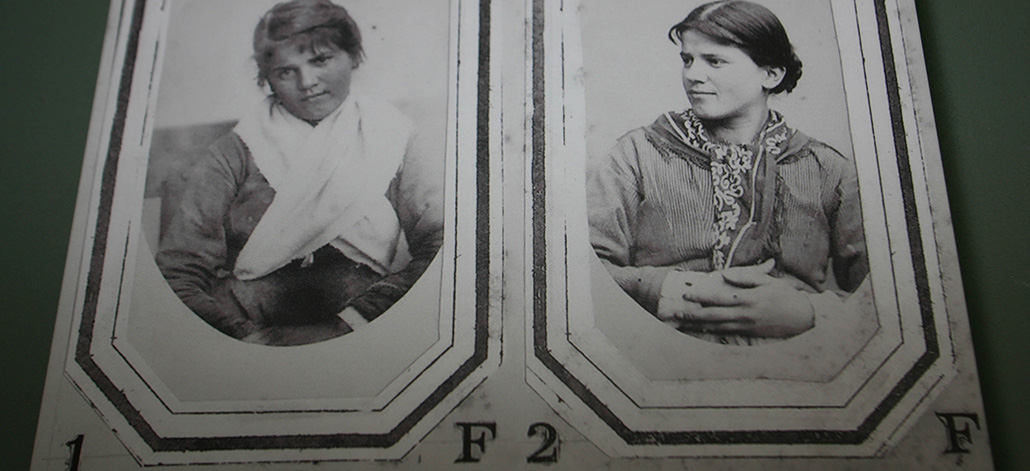
hospital history

a brief history
The island of San Servolo was initially home to a monastery, subsequently a hospital and psychiatric hospital. The first Benedictine monks settled here in the early 9th century, constructing a small church and a monastery dedicated to Saint Servolo, a 3rd-century martyr from Trieste. The island’s monastic purpose continued with the arrival of nuns from the convent in Malamocco in the early 12th century. Nuns continued living here until 1615. In his book Isolario (1696-1697), Coronelli explains that the island was basically uninhabited after that time. In 1647, about 200 nuns arrived from Candia, fleeing from the Turks. Their numbers declined during the second half of the 17th century until on 4 June 1716, the Senate had the last two nuns from Candia still living on the island removed, and began using the convent buildings as a Military Hospital. This marked the end of the island’s convent history, and the beginning of its calling as a hospital.
The first settlements .pdf download
The history of the hospitals on San Servolo saw two historic phases: the first linked to the history of Venetian hospital institutions, and the second to segregation and the treatment of mental illness. A period lasting more than two hundred years began with the institution of the Military Hospital by the Venetian Republic in the 18th century, followed by the admission of the first mentally ill patients on the site. On 31 December 1808, the Military Hospital was closed for good. On 1 March 1809, the Hospital of the 60 Wounded opened, established by noblewoman Anna Vendramin Loredan for the “care of 60 repugnant poor people wandering the city”. The hospital would remain there until 1874. The early 1900s saw new approaches in the care for mental illness, which would end in 1978 with Law 180 (the “Basaglia Law”, named after its promoter Professor Franco Basaglia) and the closing of mental asylums.

the archive
The Island of San Servolo was first used as an insane asylum in 1725, with the admission of the first “madman” under the supervision of the Hospitalier monks of S. Giovanni di Dio, who were called Fatebenefratelli (translated as “do good, brothers”). Their work continued for centuries, with changes in management, until 1978 and Law 180/78 (called the “Basaglia Law” after its promoter Professor Franco Basaglia), when insane asylums were closed, leaving the Province of Venice – now the Metropolitan City of Venice – a unique historic heritage (medical files, administrative documents, registers, etc.), a source of historic memory for San Servolo, the city of Venice and the history of psychiatric medicine from its beginnings to the present. The archive was managed by Fondazione San Servolo IRSESC (Istituto per le Ricerche e gli Studi sull’Emarginazione Sociale e Culturale) until 2014. Beginning in 2015, due to the merger and incorporation with the Metropolitan City of Venice, IRSESC’s functions passed to the in-house company of the Metropolitan City, “San Servolo – Servizi Metropolitani di Venezia”. The archive is open from 9:30 AM to 1:00 PM, Tuesday to Thursday. The archive can also be visited by appointment, by calling 041 276 5452/7 or by e-mail museomanicomio@servizimetropolitani.ve.it. “Reserved documents regarding purely private situations of persons” (in this case, medical files) can be consulted only after 70 years. The Island of San Servolo’s archive heritage includes the following archive collections:
Provincial psychiatric hospital of San Servolo ( 1718 – 1978) .pdf download
Provincial psychiatric hospital of San Clemente of Venice( 1873 – 1980) .pdf download
The archive also contains a significant photographic heritage including two albums with photos of patients beginning in 1874, and two albums of photos of the psychiatric hospital buildings in the early 20th century for San Servolo. For San Clemente, there are five albums with photos of patients beginning in 1873, and two albums of photos of the psychiatric hospital buildings. There are also 13 695 photographic plates belonging to the San Servolo archive almost exclusively related to patients from 1921 to 1971. Additionally, almost all of the medical files include a photo of the patient from 1874 on.

the old San Servolo apothecary
“On 4 January 1719 (more veneto: the year began on 1st March and ended on 28 February), the Magistrate of Health of the Most Serene Republic, Alvise Mocenigo, decreed that the “public apothecary established on the island of San Servolo be perpetually intended to provide medicines necessary for the Hospital at the aforementioned annexed apothecary”. The apothecary monks of the Order of the Hospitalier Fathers of Saint John of God were so highly regarded by the Magistrate of Health that their apothecary was recognised as the “public apothecary of the forts and militias”. Starting in 1749, it provided medications for the hospitals and dispensaries of the most important military strongholds of the Republic, including Chioggia, Zara and Corfù. In 1809, the Hospital on San Servolo’s apothecary became the “General Apothecary”, responsible for preparing all the medications for the poor of the city’s thirty fraternities. In 1826, the Congregation of Charity, charged with the central administration of public charity establishments, was dissolved and the San Servolo apothecary returned to its regular work serving the hospital, which had become the Central Psychiatric Hospital of the Veneto Provinces in 1804. The San Servolo apothecary continued operations, also serving the hospital on the island of San Clemente, until 10 August 1978, when the psychiatric hospital was closed under Law 180. Taken from the research of Dr Ernesto Riva, in Atti e Memorie dell’Accademia Italiana di Storia della Farmacia; a. XIII no. 1, April 1996 Today, over 200 pharmaceutical jars still sit on the solid walnut shelves in the ancient apothecary of San Servolo. A variety of shapes and sizes, almost all of them still have their lids, and are marked with the image of the lion of Saint Mark in yellow above the scroll. It also has a workbench and a few mortars (one dating from 1815) and two weigh scales. The apothecary is included in the tour of the Psychiatric Hospital of San Servolo




